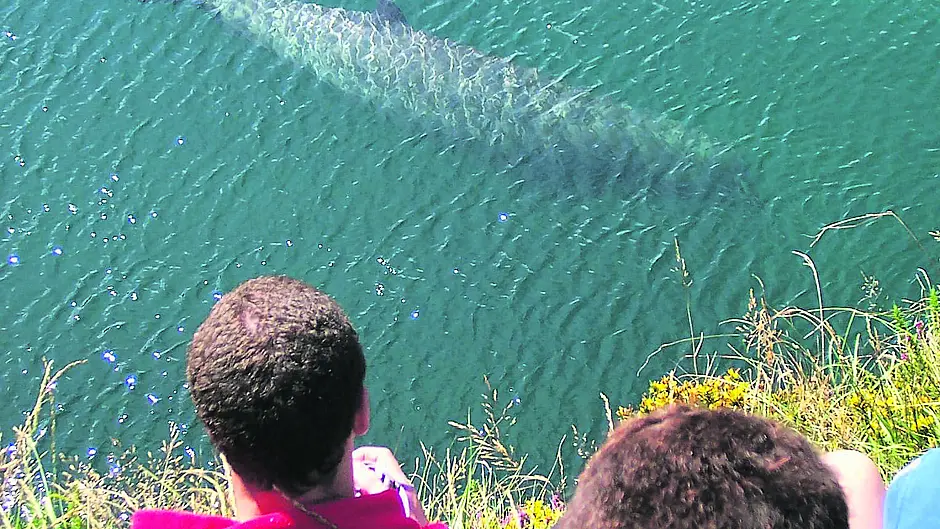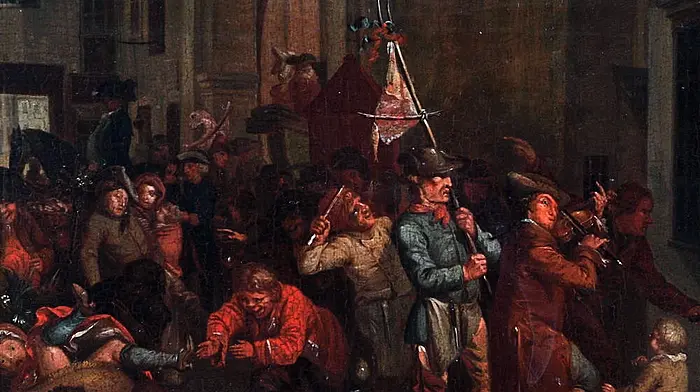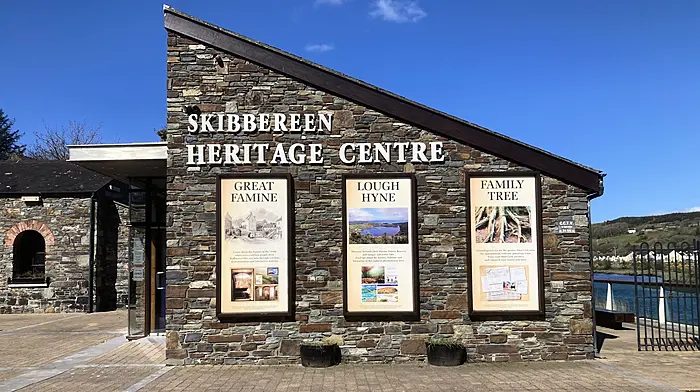EARLIER this week there was a bit of a mystery surrounding the discovery of whale bones at Barleycove Beach.
The discovery, at the weekend, had the Irish Whale and Dolphin Group’s sightings officer, Pádraig Whooley, scratching his head.
The almost intact skeletal remains of what looks large enough to be a whale has been described by Pádraig as ‘amazing.’
‘It’s normal for whale bones to wash up all the time,’ he said, ‘but this looks almost like a complete skeleton.’
 The whale bones seemed perfectly laid out, but the mystery was solved this week.
The whale bones seemed perfectly laid out, but the mystery was solved this week.
On Wednesday it was revealed that a family from Wicklow had, in fact, arranged the bones after finding them on the beach.
A picture of the bones, which had been found by children at the weekend, was sent to The Southern Star exclusively on Monday, and it revealed the anatomically-correct display of bones. They were so good, in fact, that Pádraig wondered if they had been laid out deliberately.
‘To me it looks as if somebody has actually laid it out, as if somebody had done a lot of work – the way the ribs are all neatly displayed,’ he said at the time.
‘If an animal died naturally, the ribs would be scattered all over the place. The ribs wouldn’t just be lying like that; they’d be scattered for kilometres around.
‘Whales don’t die like that and when they die scavengers rip them apart and the bones end up all over the place. The vertebrae would be all over the place too,’ he added. ‘They wouldn’t be standing up neatly. They’d be all higgledy-piggledy and strewn all over the place.’
Barleycove resident Denis O’Kelly said he went to investigate the find with his dog, Bear, on Sunday. He believed, then, that the extreme Force 10 wind conditions, which came from two different directions during Storm Betty, might have uncovered the remains that could have been buried in the sand.
‘The winds were very high in that region from about 5pm last Friday,’ he said. ‘Initially, they were blowing from the east but later that night it backed and blew from the west and the wind and the sand were all over the place.’
The Irish Whale and Dolphin sightings officer said he would have liked to have taken a closer look at the bones, but he was busy with the three very-much alive bottlenose whales which had been spotted off Eagle Point in Bantry Bay. Pádraig said it was the second sighting of Northern bottlenose whales (Hyperoodon ampullatus) this week, just four days after a pair were recorded off Great Blasket Island.
He said three animals were filmed just off Eagle Point campsite in Ballylickey in Bantry bay on Sunday.
‘Northern bottlenose whales are one of the deep diving beaked whales that make up the second largest cetacean family (ziphiidae) and can routinely dive to depths of 1,500 metres,’ he said.
The IWDG spokesperson expressed concern that even the deep waters of Bantry Bay can provide neither suitable habitat nor food for this squid feeder.
‘We are also mindful,’ he said, ‘that another Northern bottlenose whale live-stranded and died yesterday in Rustington, West Sussex, UK and it’s possible that these events are somehow connected.
‘Our hope for now is that all three whales make it out into open water and the Atlantic’s deep canyon systems that are their preferred habitat.’
He described the animals as being quite similar in profile and length to a minke whale, but brownish in colour and with a very obvious bulbous melon and a very steep flat forehead. They often show a short blow and can be very active with long bouts of breaching.







